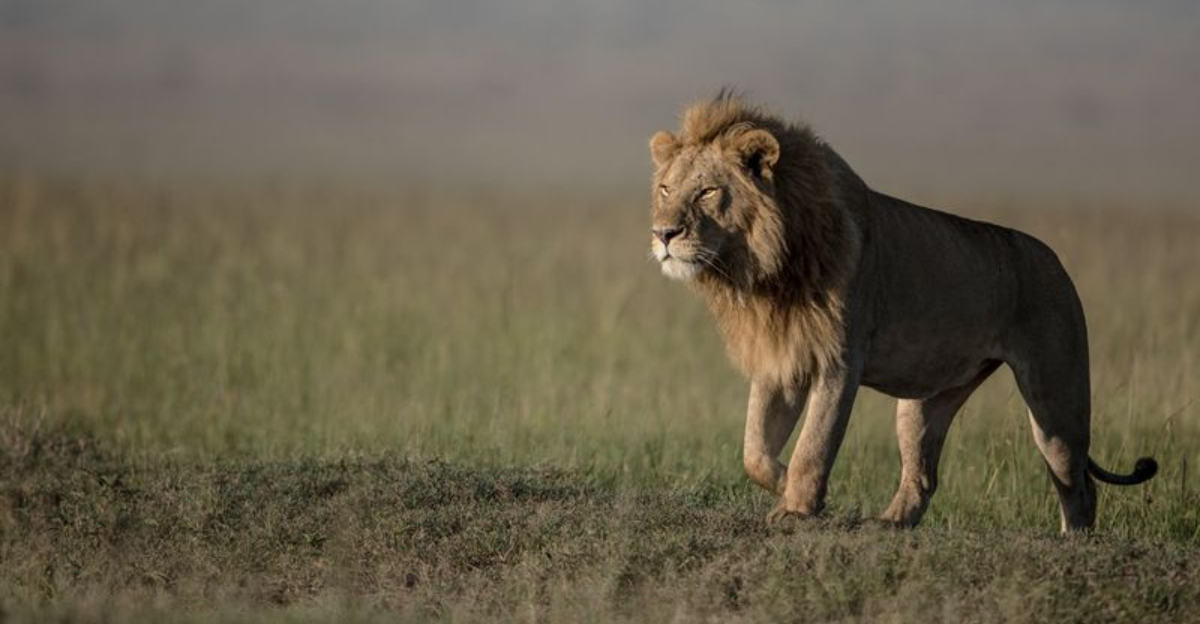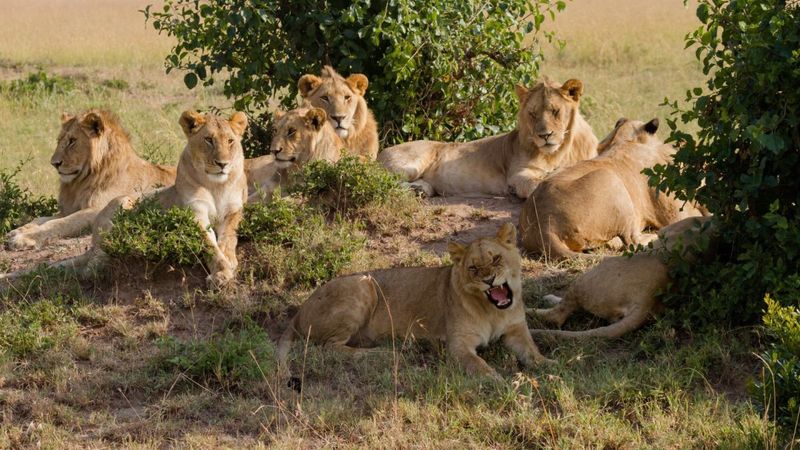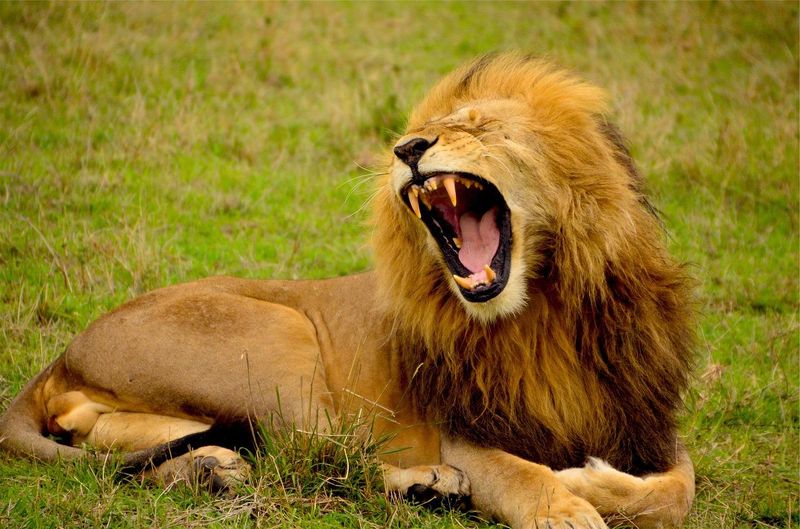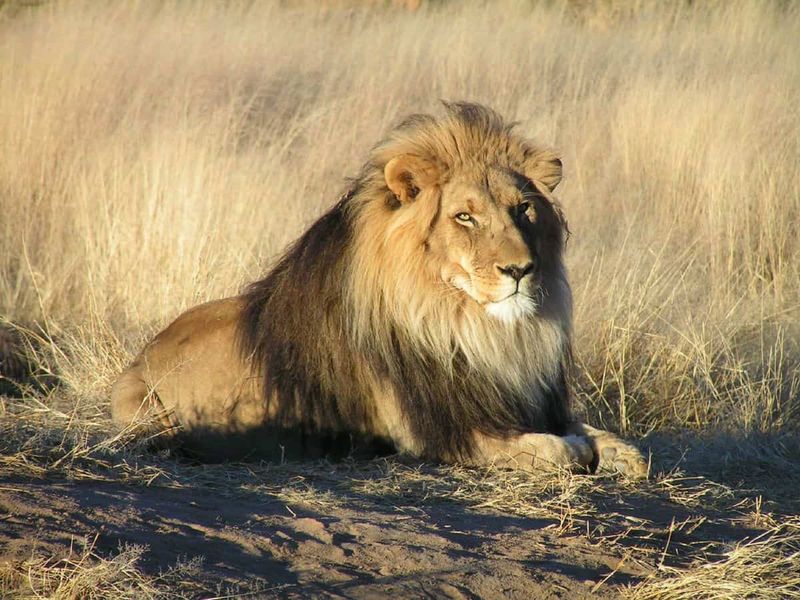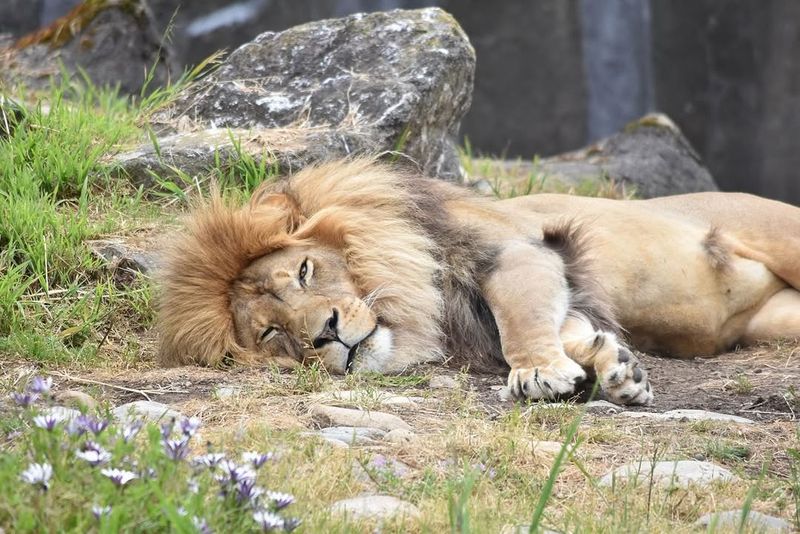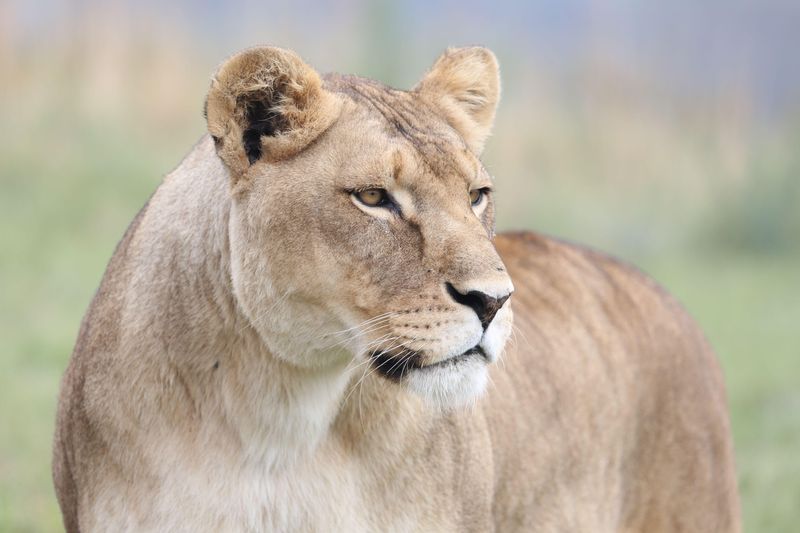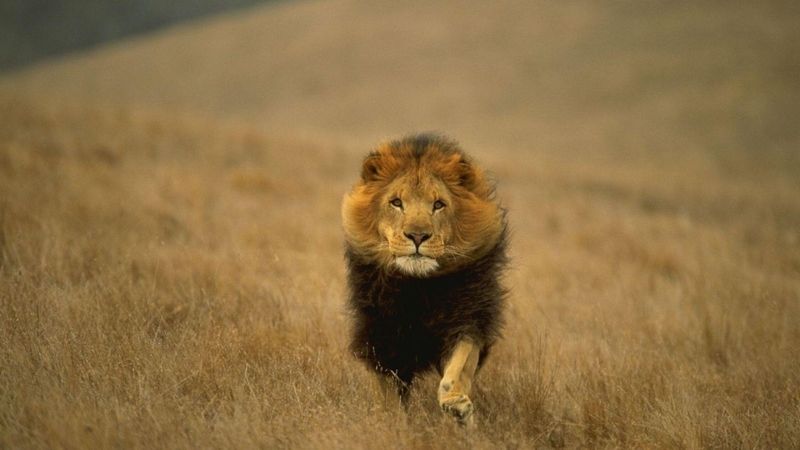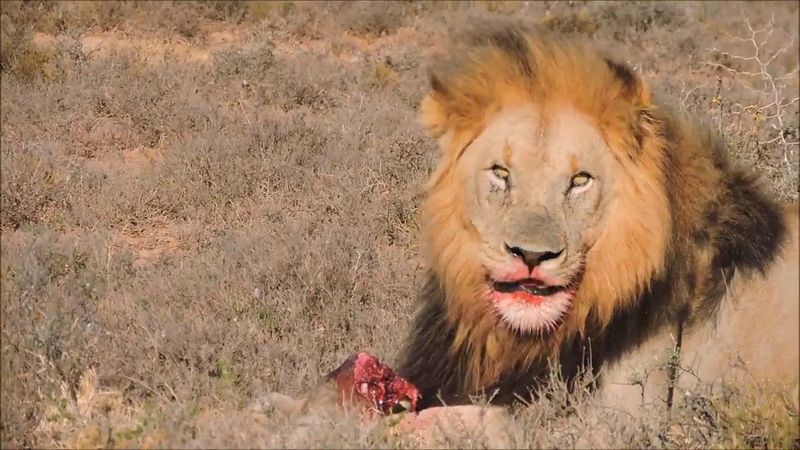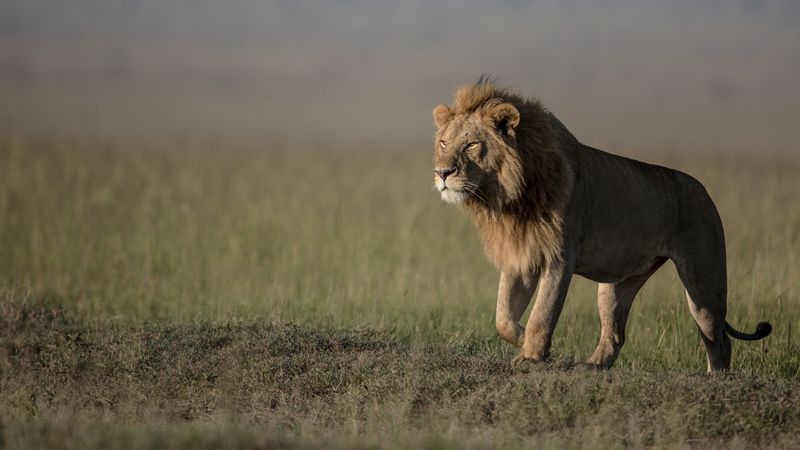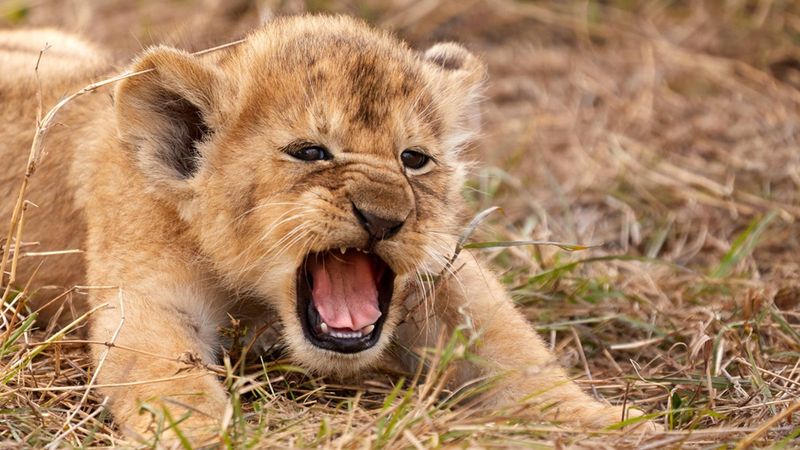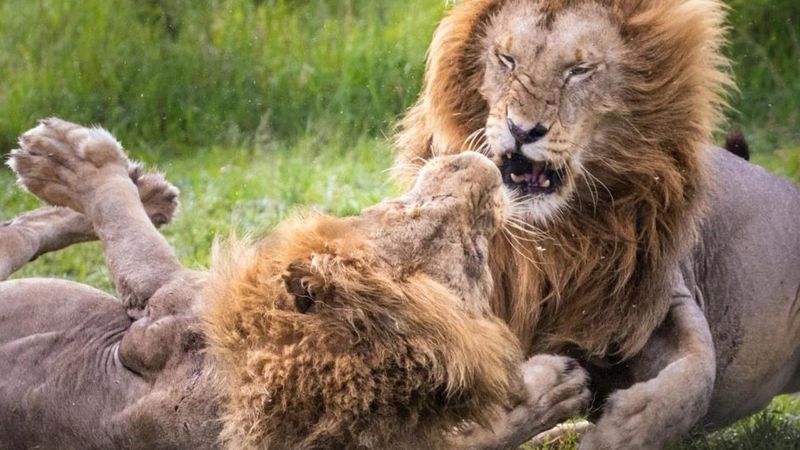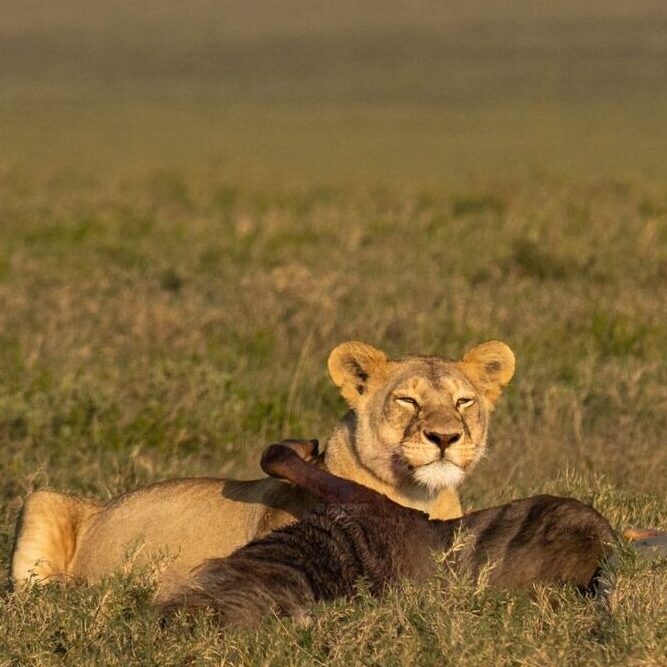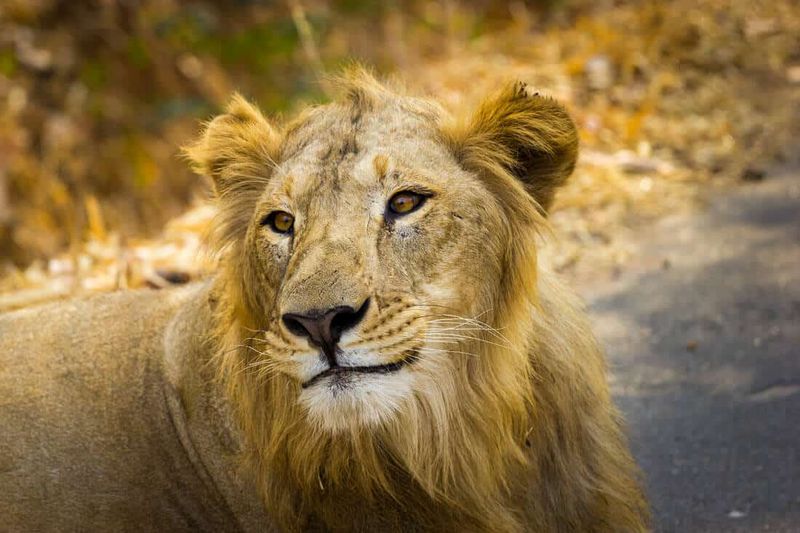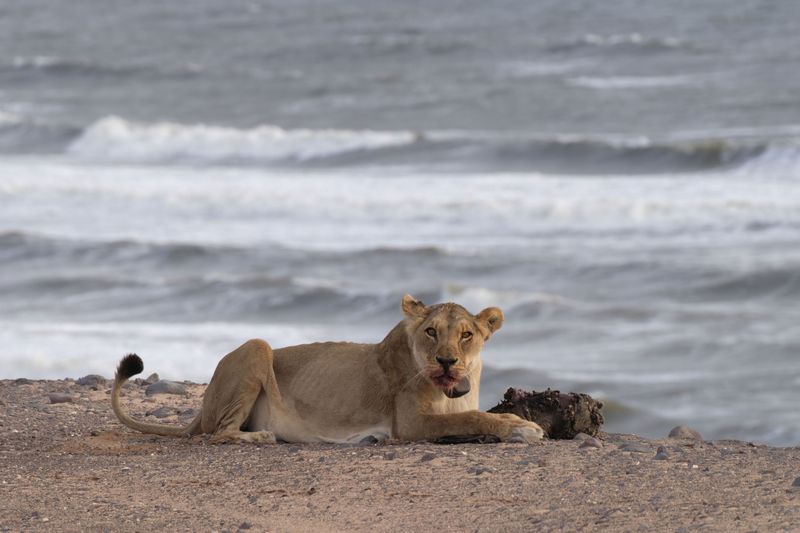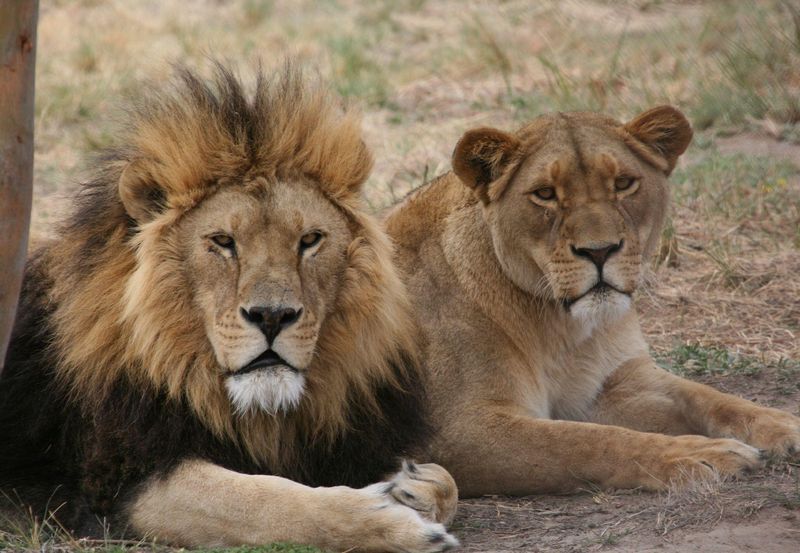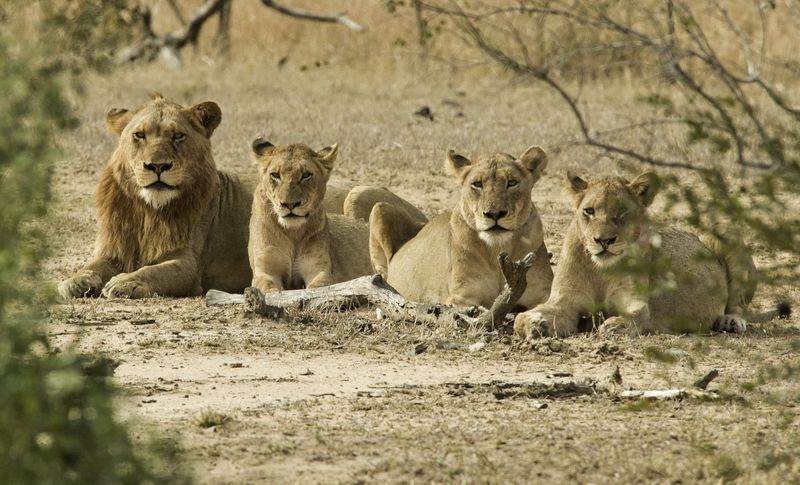📖 Table of Content:
- 1. Lions Are the Only Truly Social Big Cats
- 2. A Lion’s Roar Can Be Heard Up to 5 Miles (8 km) Away
- 3. Male Lions Have Majestic Manes for a Reason
- 4. Lions Sleep for Up to 20 Hours a Day
- 5. Lionesses Are the Primary Hunters
- 6. Lions Can Run Up to 50 mph (80 km/h) in Short Bursts
- 7. A Lion’s Bite Is Powerful Enough to Crush Bone
- 8. Lions Are Carnivores But Sometimes Scavenge
- 9. Lion Cubs Are Born with Spots
- 10. Only About 1 in 8 Male Lions Survive to Adulthood
- 11. Lions Once Roamed Across the Globe
- 12. Asiatic Lions Are Smaller Than African Lions
- 13. Lions Can Eat Up to 90 Pounds (40 kg) of Meat in One Meal
- 14. Lions Are Facing a Major Population Decline
- 15. A Group of Lions Is Called a “Pride” – But a Group of Males Is a “Coalition”
Often referred to as the “Kings of the Jungle,” lions are among the most majestic and powerful predators on Earth. These big cats have fascinated humans for centuries, symbolizing strength, courage, and leadership in various cultures. Despite their fearsome reputation, lions are also deeply social animals, living in well-structured prides that work together to survive in the wild. From their mighty roars to their impressive hunting strategies, lions continue to capture our imagination and respect.
However, there is much more to these incredible creatures than meets the eye. Beyond their golden fur and regal manes, lions exhibit fascinating behaviors, unique survival tactics, and surprising adaptations that help them thrive in the wild. Their ability to communicate, their intricate social hierarchy, and even their lesser-known scavenging habits all contribute to their success as apex predators. Understanding these facts not only deepens our appreciation for lions but also highlights the importance of conserving their rapidly declining populations.
In this article, we’ll explore 15 must-know facts about lions, from their early days as playful cubs to their reign as dominant rulers of the savanna. Whether you’re a wildlife enthusiast, a big cat lover, or simply curious about these incredible animals, these facts will give you a deeper insight into the life of a lion—from cubs to kings.
1. Lions Are the Only Truly Social Big Cats
Unlike other big cats, lions live in groups called prides, which can consist of up to 30 individuals, including females, cubs, and a few dominant males. This social structure allows them to coordinate hunting and protect their territory more effectively. In a pride, lionesses usually share the responsibilities of hunting and caring for the young, while males defend the pride from threats. Such cooperation ensures their survival in the wild. The pride’s bond is strengthened through grooming and playing, highlighting their complex social behavior. These social interactions distinguish lions from their solitary big cat relatives.
2. A Lion’s Roar Can Be Heard Up to 5 Miles (8 km) Away
The lion’s roar is one of the most iconic sounds in the animal kingdom, serving multiple purposes in their social structure. It helps them communicate with pride members, maintain their territory, and warn rival lions to stay away. Roaring occurs mainly at night and can be heard up to 5 miles away, marking their presence in the vast wilderness. This powerful vocalization is also a display of strength and dominance, particularly by male lions with impressive manes. The deep, resonant sound reverberates through the landscape, an auditory symbol of their reign as apex predators.
3. Male Lions Have Majestic Manes for a Reason
The mane of a male lion is a striking feature that serves more than just aesthetic purposes. A fuller, darker mane indicates a stronger and more dominant lion, attracting potential mates and intimidating rivals. The mane provides protection during fights, shielding vital areas from injury. As a lion matures, its mane grows thicker, signifying its status within the pride and to outside challengers. This visual cue helps lionesses choose mates based on genetic fitness. The mane’s magnificence is a testament to the lion’s role as a powerful leader in the wild, commanding respect and admiration.
4. Lions Sleep for Up to 20 Hours a Day
As apex predators, lions spend a significant portion of their day resting, conserving energy for hunting. They sleep for up to 20 hours a day, primarily active during the cooler times of dusk and dawn. This behavior helps them avoid the heat of the day and optimize their hunting success. Sleeping also aids in digesting large meals, as lions can eat massive quantities in a single sitting. This rest period is crucial for maintaining their strength and agility, ensuring they remain formidable hunters. The harmony of their daily rhythm reflects the balance they achieve in the wild.
5. Lionesses Are the Primary Hunters
In the lion pride, females are the primary hunters, working together to bring down prey with strategic teamwork. Their cooperative hunting techniques often involve flanking and chasing, utilizing their speed and agility to outmaneuver prey. Lionesses rely on their strong bond and communication to execute successful hunts, providing for the entire pride. This division of labor allows males to focus on protecting the pride and territory. The lionesses’ role is crucial for the pride’s survival, showcasing their strength and intelligence. Their teamwork is a remarkable example of natural cooperation, ensuring the pride thrives.
6. Lions Can Run Up to 50 mph (80 km/h) in Short Bursts
Lions are known for their incredible speed, capable of reaching up to 50 mph in short bursts when needed for hunting. However, they lack endurance and rely on surprise and strategic positioning to catch prey. This explosive speed is complemented by their powerful leg muscles, enabling quick acceleration. Typically, they stalk their prey closely before launching a swift and deadly attack. The lion’s hunting prowess is a combination of speed, strength, and timing, allowing them to capture elusive prey. Their ability to sprint is a testament to their adaptability and skill as apex predators.
7. A Lion’s Bite Is Powerful Enough to Crush Bone
The lion’s bite is one of its most formidable weapons, capable of exerting a force of around 650 psi, enough to crush bone. This powerful bite allows lions to consume nearly every part of their prey, leaving little waste. Their sharp canines and strong jaw muscles are perfectly adapted for gripping and tearing flesh. This ability is crucial for survival, ensuring they extract maximum nutrition. Lions often target the throat or spine of their prey, delivering a quick, fatal bite. The efficiency of their bite demonstrates the lion’s evolutionary adaptations as a top predator.
8. Lions Are Carnivores But Sometimes Scavenge
Though skilled hunters, lions occasionally scavenge, taking advantage of opportunities to steal food from other predators like hyenas and leopards. This opportunistic behavior ensures they maximize food intake, especially in times of scarcity. Adult lions are powerful enough to chase off smaller predators and claim a kill for themselves. By scavenging, they conserve energy that would otherwise be spent hunting. This behavior highlights their adaptability and resourcefulness in the wild. While primarily carnivorous, the ability to scavenge underlines the lion’s role as a versatile and efficient apex predator within its ecosystem.
9. Lion Cubs Are Born with Spots
Lion cubs enter the world with faint spots on their golden fur, an adaptation that helps them camouflage in the grass. These spots, which fade as they grow older, offer protection from predators during their vulnerable early months. The mother lioness hides her cubs from other predators, moving them frequently to ensure their safety. Cubs remain hidden for the first few weeks, relying on their mothers for nourishment. As they mature, they join the pride and learn essential survival skills. This early stage of life is crucial, with the spots playing a vital role in their initial survival.
10. Only About 1 in 8 Male Lions Survive to Adulthood
The journey to adulthood for a male lion is fraught with challenges, with only about 1 in 8 surviving to maturity. Young males face threats from rival lions, predators, and food scarcity. As they reach adolescence, they are often driven out of their natal pride, forcing them to fend for themselves. During this nomadic phase, they form coalitions with other males, increasing their chances of survival. Despite these efforts, many succumb to the harsh realities of the wild. This tough journey highlights the resilience and determination required to become a mature, dominant lion in the wild.
11. Lions Once Roamed Across the Globe
Thousands of years ago, lions roamed vast regions across Europe, Asia, and the Americas, showcasing their adaptability to various environments. Today, their range is limited primarily to Africa, with a small population in India’s Gir Forest. This dramatic reduction in habitat results from climate change, human expansion, and hunting. Efforts to conserve the remaining lion populations focus on habitat protection and reducing human-wildlife conflict. This historical perspective highlights the importance of conservation to prevent further decline. Understanding lions’ past distribution underscores the need to protect these majestic creatures and their environments for future generations.
12. Asiatic Lions Are Smaller Than African Lions
Asiatic lions, found only in India’s Gir Forest, differ from their African counterparts in size and appearance. They have shorter, less dense manes and tend to be slightly smaller. These differences result from adaptations to their specific environment and genetic divergence over thousands of years. Despite their smaller size, Asiatic lions are equally formidable, with strong social structures similar to African prides. Conservation efforts in India have helped stabilize their population, although challenges remain. The unique characteristics of Asiatic lions highlight the diversity within the species and the importance of preserving this distinct subpopulation.
13. Lions Can Eat Up to 90 Pounds (40 kg) of Meat in One Meal
After a successful hunt, a lion can gorge itself on extreme amounts of meat, consuming up to 90 pounds in a single meal. This feast allows them to go several days without needing to hunt again, conserving energy. The ability to eat large quantities is beneficial in the wild, where meals can be unpredictable. Lions’ flexible stomachs accommodate this dietary habit, expanding to hold significant amounts of food. This feeding strategy underscores their survival instincts, allowing them to thrive in harsh conditions. Such adaptations demonstrate the lion’s prowess as a top predator in the ecosystem.
14. Lions Are Facing a Major Population Decline
Lions are experiencing a significant decline in numbers due to habitat loss, human-wildlife conflict, and poaching. Over the last few decades, their population has dropped dramatically, raising concerns about their future. Conservation efforts focus on protecting habitats, reducing human-lion conflict, and combating illegal hunting. Education and community involvement play crucial roles in these initiatives, aiming to create sustainable solutions for coexistence. The plight of lions serves as a call to action for global conservation efforts, emphasizing the need to protect these iconic animals. Their survival depends on collective efforts to address the challenges they face.
15. A Group of Lions Is Called a “Pride” – But a Group of Males Is a “Coalition”
While prides consist of females and their cubs, groups of young male lions form coalitions as they roam together. These coalitions are typically made up of brothers or unrelated males who band together for strength and protection. This temporary alliance increases their chances of survival as they search for their own pride to take over. Through cooperation, they navigate the challenges of the wild, learning and growing together. The dynamics of coalitions reflect the complex social structures of lions, illustrating the balance between competition and cooperation that defines their existence in the animal kingdom.
